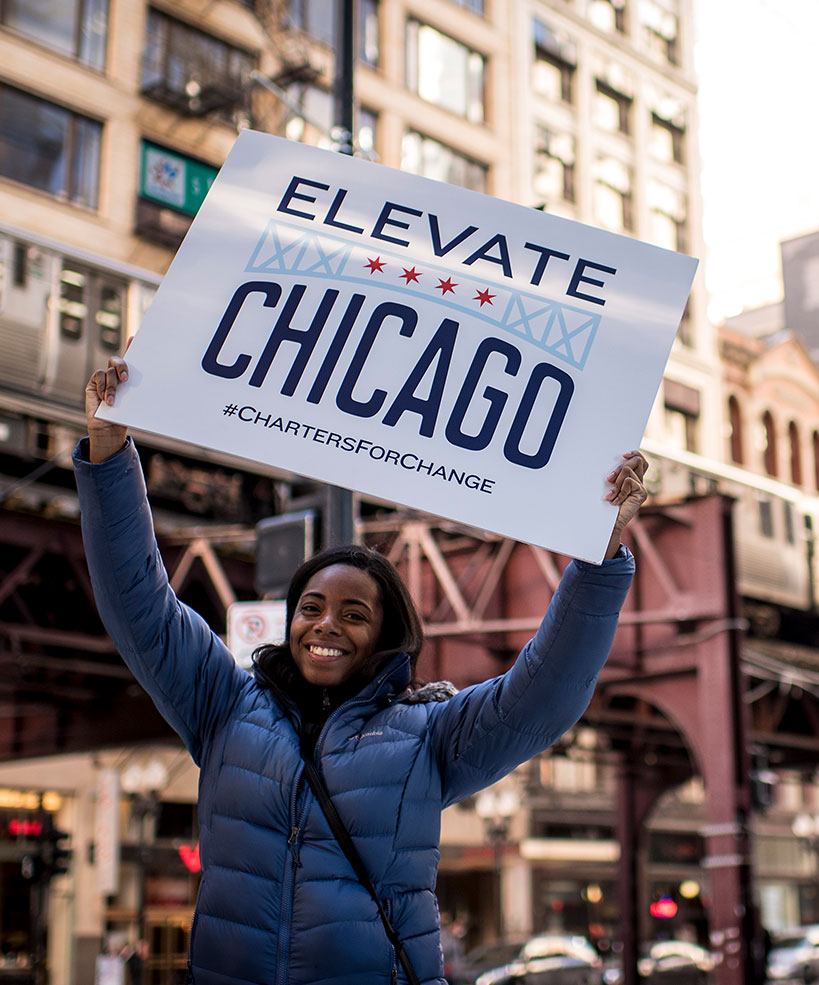
Top Education Stories You Don’t Want to Miss: October 29 – November 4, 2022
Student ‘peace warriors’ at Chicago’s West Side schools spread message of nonviolence
By Mauricio Peña for Chalkbeat
“As a child, DeMarcus Thompson spent most of his time inside his house. His mom worried about the shootings that regularly erupted on his block and didn’t want to risk letting him play outside. Now, as a Peace Warrior at North Lawndale College Prep, the 17-year-old’s mission is to stop fights at his school before they escalate and contribute to the violence beyond the school walls. The Peace Warriors program, a central part of the West Side charter school’s efforts to confront gun violence by centering students’ needs, trains students to mediate conflicts, support grieving classmates, and bring peace and happiness to school by greeting peers at the front door and leaving celebratory birthday notes on lockers.”
“Get Involved, Expand Your Village” – A Noble Parent Speaks on Family Engagement
By Temeka Cartwright for The Noble Schools
“When I was asked to write for this blog about parent engagement in education, I was excited, and the nerves set in. How can I write something that effectively shows how I support my daughter’s school life? I am a single, working parent. I work a 9-to-5 that often extends until 7 p.m. sometimes. I have wanted to be involved at my daugher’s school, but my main priority is to provide for Ramiah. My daughter began her educational journey with Noble, specifically Butler College Prep, her sophomore year. She has flourished ever since. Her enthusiasm and love for her educators and administrators are what inspired me to want to get involved. I want to support the community that inspires my child to see greatness in herself.”
By Maddie Ellis for The Chicago Tribune
“Chicago Public Schools leaders, students and faculty gathered at Gage Park High School early this week to celebrate the district’s record 82.9% four-year graduation rate. In addition, the district boasted $1.5 billion in scholarships awarded to the Class of 2022, as well as freshman-on-track rates rising to pre-pandemic levels, a measure of the percentage of students likely to graduate. Just two days later, though, district officials offered a more “sobering” look at student achievement with a presentation to the Board of Education of new testing data highlighting what they called “an overall decline in student performance.”
Staffing grows in Chicago Public Schools even while enrollment drops
By Sarah Karp & Nereida Moreno for WBEZ
“There are more adults working in schools this year, and budgeted staff positions have grown by 10% over the past two years. CPS posted 40,344 staff positions in fall 2020. Currently, there are 44,347 positions in district-run schools. Most charter school positions are not included. This comes even as enrollment has dropped by 18,500 students during that same period. Over the last six years, CPS has seen an increase in key positions, including classroom teachers and teachers assistants, but other positions too — including coaches who help teachers improve instruction, nurses and staff to support homeless students, WBEZ’s analysis shows.”
Illinois school districts received billions in COVID relief funds but some are slow to spend
By Mila Koumpilova & Jewél Jackson for Chalkbeat Chicago
“Illinois school districts have received more than $7 billion in federal relief money to help reopen schools and ease the academic and mental health fallout from the COVID-19 pandemic. But a Chalkbeat/Better Government Association analysis found that a slew of high-poverty districts across the state have spent small fractions of their relief funds, despite serving students who were especially hard hit by the pandemic. Many are in Chicago’s south suburbs, where almost a dozen districts have reported spending 15% or less of their federal dollars. Bloom Township, where 72% of almost 3,000 students are low-income, has spent only 6% of its $20 million allocation, according to state data.”
